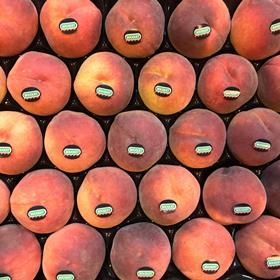
The Spanish stonefruit crop is shaping up to be one of exceptional quality, with production volumes expected to be just under the 2016 total, according to Miguel ángel Gómez of Fepex’s stonefruit committee.
Speaking to Efeagro, Gómez said although an accurate crop estimate would not be made until mid-May, “climatic conditions during the winter and spring have been favourable and, with the exception of the odd localised frost, the fruit is coming through very well, which points to 2017 being a good year for both appearance and flavour”.
Harvesting is already underway in Huelva with early peaches and nectarines and will spread to Sevilla, Murcia, Valencia and finally Aragón and Cataluña during the coming months.
However, exporters fear the continued closure of the Russian market and Brexit could make for a complicated 2017 campaign.
Gómez said the Russian veto had had a major impact on producers, particularly those in northern Spain, as it had led to other markets becoming saturated.
Pascual Hortelano of cooperative federation FECOAM said that prior to the ban Spain had been heavily reliant on the Russian market.
“We need Russia, not just because of the huge demand but also because it is relatively easy to reach in comparison to China and other Asian markets,” Hortelano noted.
While much was made of the opening of the Chinese market last year, the volumes it receives represent a tiny fraction of Spain’s stonefruit exports. Figures from Fepex show that 779 tonnes of plums, 29 tonnes of peaches and 22 tonnes of nectarines were sent to China in 2016 and although this looks set to rise this year, it will remain a niche market due to its distance and the logistical challenges it poses.
By contrast, the European Union accounted for 92 per cent of the 1.039m tonnes of stonefruit Spain exported last year. Of this, nectarines made up 419,000 tonnes, peaches 407,000 tonnes, plums 109,000 tonnes, apricots 80,000 tonnes and cherries almost 24,000 tonnes.
Hortelano warned that in the years following the crash of the property market there had been a surge in investment in new orchards in Murcia, which produces just under half of Spain’s export volume.
“People from outside the industry are buying up large swathes of land and this could lead to further market saturation in the future,” he said.



